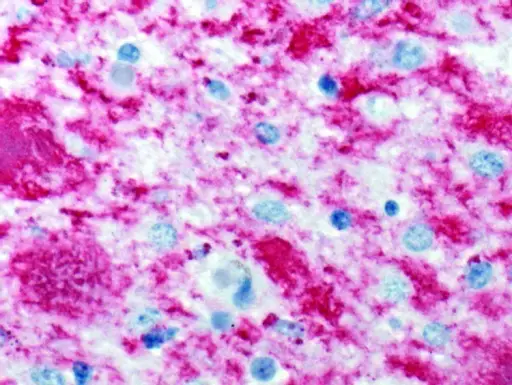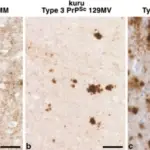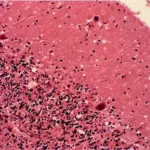Creutzfeldt-Jakob disease is a transmissible spongiform encephalopathy that results in rapidly progressive dementia and death usually within a year from onset. The vast majority are sporadic, but familial and acquired forms are occasionally encountered.
What is the Pathology of Creutzfeldt-Jakob disease?
Etiology: The cause of Creutzfeldt-Jakob disease are prions. They are misfolded proteins that occur in the neurons of the central nervous system (CNS). They are thought to affect signalling processes, damaging neurons and resulting in degeneration that causes the spongiform appearance in the affected brain.
Genes involved: People can also develop CJD because they carry a mutation of the gene that codes for the prion protein (PRNP).
Pathogenesis: There are four types of Creutzfeldt-Jakob disease:
- Sporadic (sCJD)
- Variant (vCJD)
- Familial (fCJD)
- Iatrogenic (iCJD)
Histology: The histology associated with Creutzfeldt-Jakob disease shows sponge-like lesions in the brain tissue. There is also the presence of many round vacuoles from one to 50 micrometres in the neuropil, which appear glassy or eosinophilic and may coalesce. Neuronal loss and gliosis is may also be seen.
How does Creutzfeldt-Jakob Disease Present?
Patients with Creutzfeldt-Jakob disease typically affects more males than females. It is frequently found in people 55-65 years of age. The symptoms, features, and clinical findings associated with Creutzfeldt-Jakob disease include dementia, hallucinations, anxiety, depression, and ataxia.
How is Creutzfeldt-Jakob Disease Diagnosed?
Creutzfeldt-Jakob disease is diagnosed by history, physical exam, electroencephalography, MRI, CSF fluid analysis, and brain biopsy.
How is Creutzfeldt-Jakob Disease Treated?
Creutzfeldt-Jakob disease has no cure. Treatment is mostly palliative. Sedatives and antidepressants may help with symptoms. Myoclonic jerks can be handled with clonazepam or sodium valproate.
What is the Prognosis of Creutzfeldt-Jakob Disease?
The prognosis of Creutzfeldt-Jakob disease is poor.



